Dometic DSP1212C, DSP1224C, DSP2012C, DSP2024C Service Manual

DSP 1212C, DSP 1224C,
DSP 2012C, DSP 2024C
1 |
|
|
1 |
2 |
3 |
BREAKER
 2
2
|
|
|
STATUS |
|
|
|
|
|
2 |
|
|
|
ON |
|
|
BREAKER |
|
OFF |
|
3 |
|
|
REMO. |
1 |
OUTPUT |
INPUT |
|
6 |
5 |
4 |
9 |
10 |
11 |
12 |
|
1 |
2 |
3 |
4 |
5 |
|
|
|
|
|
|
|
|
|
CN1 |
|
|
|
|
|
|
|
|
|
|
|
CN1 |
|
|
|
|
|
|
|
1 |
2 |
3 |
4 |
5 |
|
|
|
|
|
N.O |
COM |
N.C |
ENB+ ENB- |
|
LNA |
INPUT(-) |
|
LNB |
INPUT(+) |
|
||||
|
|
|
|
||||||
8 |
7 |
3
4 |
1 |
2 |
3 |
 4
4
5 cm
5 cm
5
A B
LNA |
|
INPUT(-) |
LNB |
INPUT(+)
6 |
|
A |
B |
1.
2.



C
7
A |
B |
|
|
LNA |
|
|
INPUT(-) |
LNB |
|
|
|
|
INPUT(-) |
|
|
|
INPUT(+) |
|
INPUT(+) |
|
ON OFF REMO.
1.
LNA 



 2.
2. 



















































 1.
1.
CLICK


 2.
2.
1.
8
|
|
LNA |
|
|
3. |
INPUT(-) |
LNB |
|
|
||
|
|
|
|
|
bk |
|
INPUT(+) |
|
|
|
|
2. |
|
rd |
|
1 |
|
bk |
rd |
|
|
bk |
rd |
|
|
bk |
rd |
|
Black |
Red |
|
|
Zwart |
Rood |
|
|
Czarny |
Czerwony |
EN |
|
NL |
|
PL |
||||||
|
|
|
|
|
|
|
|
|||
DE |
Schwarz |
Rot |
|
DA |
Sort |
Rød |
|
SK |
Čierna |
Červená |
|
|
|
|
|
|
|
|
|||
FR |
Noir |
Rouge |
|
SV |
Svart |
Röd |
|
CS |
Černá |
Červená |
|
|
|
|
|
|
|
|
|||
ES |
Negro |
Rojo |
|
NO |
Svart |
Rød |
|
HU |
Fekete |
Piros |
|
|
|
|
|
|
|
|
|||
PT |
Preto |
Vermelho |
|
FI |
Musta |
Punainen |
|
|
|
|
|
|
|
|
|
||||||
|
|
|
|
|
|
|
|
|
||
IT |
Nero |
Rosso |
|
RU |
Черный |
Красный |
|
|
|
|
|
|
|
|
|
|
|
|
|
||
|
|
|
|
|
|
|
|
|
|
|
9
BREAKER
1
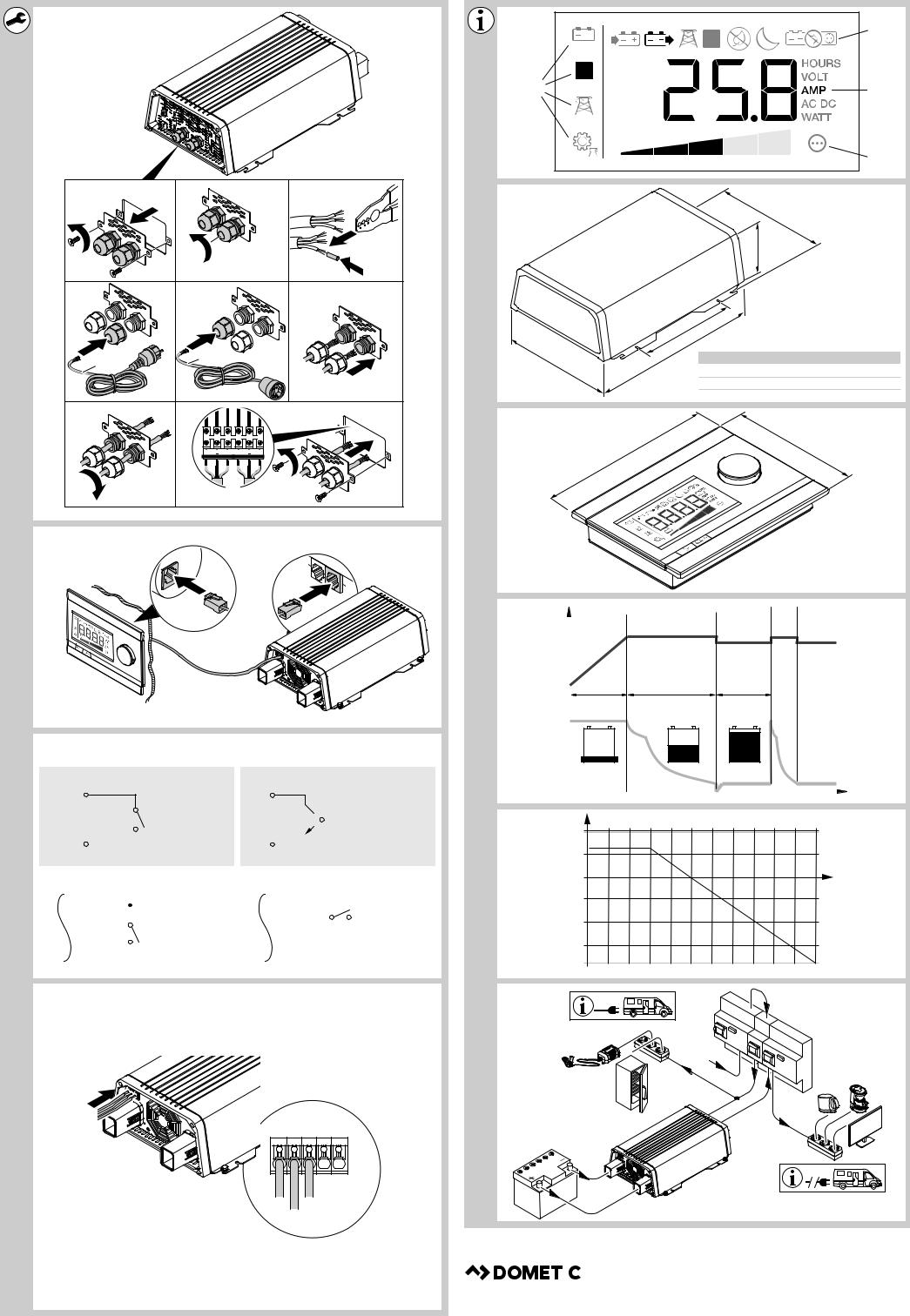
0 |
|
|
|
|
|
|
|
BREAKER |
|
|
|
|
|
A |
|
B |
|
|
|
C |
|
1. |
|
|
|
|
OUTPUT |
|
|
|
|
|
|
|
|
2. |
|
|
|
|
|
|
|
|
|
|
|
2. |
|
|
|
|
|
|
INPUT |
|
|
|
|
|
|
1. |
D |
INPUT |
E |
|
|
OUTPUT F |
|
|
OUTPUT |
|
|
OUTPUT |
|
|
|
|
|
|
|
||
|
|
|
|
|
|
OUTPUT |
|
1 |
2 |
|
|
|
|
|
|
|
|
|
|
|
G |
|
H |
|
|
|
|
|
OUTPUT |
|
|
|
|
1. |
|
|
|
|
|
|
|
|
|
L |
N |
L |
N |
OUTPUT |
|
|
|
AC OUTPUT |
|
AC INPUT |
|
|
|
|
|
|
||
|
|
|
2. |
|
3. |
|
|
|
|
|
|
||
a |
|
|
|
|
|
|
|
|
|
|
|
|
LNA |
|
|
|
|
|
|
LNB |
|
|
|
|
|
|
INPUT(+) |
b |
|
|
|
|
|
|
A |
|
|
|
|
B |
|
ENB– |
|
|
|
|
ENB– |
|
|
|
|
|
|
|
ON: INV. ON |
|
|
|
TR |
|
HI: INV. ON (TR ON) |
||||||
|
|
|
|
|
|
OFF: INV. OFF |
|
|
|
|
LOW: INV. |
OFF (TR OFF) |
||||||
|
|
|
|
|
|
|
|
|
|
|
|
|||||||
|
GND |
|
|
|
|
|
|
GND |
|
|
|
|
|
|
|
|||
|
|
|
|
|
|
|
|
|
|
|
|
|
||||||
|
|
|
|
|
|
|
|
|
|
|
|
|
|
|
|
|
|
|
C |
|
|
|
D |
|
|
|
ON: INV. ON |
||||||||||
|
|
|
|
|
|
OFF: INV. OFF |
||||||||||||
|
|
|
|
|
|
|
BAT+ |
|
|
|
|
|
|
|
||||
|
|
|
|
|
|
|
|
|
|
|
|
|
|
|
|
|
|
|
|
|
|
|
|
|
|
BAT– |
|
|
|
|
ENB |
|
|
|
+ |
DC POWER |
|
|
|
|
|
|
|
|
|
|
|
|
|
|
|
|||||
|
|
|
|
|
|
|
|
|
|
|
|
|
|
|
||||
|
|
|
|
|
|
|
|
|
|
|
|
|
|
|
|
|||
|
|
|
|
|
|
|
|
|
|
|
|
|
|
|
|
|
|
|
|
|
|
|
|
|
|
ON: INV. ON |
|
|
|
|
|
|
|
|
|
– |
|
|
|
|
|
|
|
|
|
|
|
|
|
|
|
|
|
|
||
|
|
|
ENB |
|
|
|
OFF: INV. OFF |
|
|
|
|
BAT – |
|
|
|
|
|
|
|
|
|
|
|
|
|
|
|
|
|
|
|
|
|||||
|
|
|
|
|
|
|
|
|
|
|
|
|
|
|
|
|
|
|
c

 LNB
LNB
INPUT(+) |
1 |
2 |
3 |
4 |
5 |
CN1
N.O N.C
COM
d |
|
|
|
|
|
|
|
|
|
|
|
|
|
|
2 |
|
|
|
|
|
|
|
|
|
|
|
|
|
|
|
|
|
1 |
|
|
|
|
|
|
|
|
|
|
|
|
|
3 |
|
|
|
|
|
|
|
|
|
|
|
|
|
|
|
4 |
e |
|
|
|
|
|
|
|
|
|
|
|
|
|
|
|
|
|
|
|
|
|
|
|
|
|
|
X |
|
|
|
|
|
|
|
|
|
|
|
|
|
|
H |
|
|
|
|
|
|
|
|
|
|
|
|
Y |
|
|
|
|
|
|
|
|
|
B |
|
|
|
|
L |
|
|
|
|
|
|
|
|
|
|
|
|
|
|
|
|
|
|
B |
|
L |
H |
X |
Y |
|
|
|
|
|
|
|
|
|
DSP 12xxC |
248 mm |
405 mm |
118 mm |
266 mm |
245 mm |
||
|
|
|
|
|
|
|
|
DSP 20xxC |
248 mm |
481 mm |
118 mm |
266 mm |
311 mm |
||
f |
|
|
|
|
|
|
|
|
|
|
|
|
|
|
|
|
|
|
|
|
|
|
|
|
|
|
|
110 |
|
|
|
|
|
|
150 |
|
|
|
|
|
|
|
|
|
|
|
|
g |
U/V |
1 |
|
|
2 |
|
|
|
3 |
|
4 |
|
|
|
|
I/A |
|
|
|
|
|
|
|
|
|
||||||
|
|
|
|
|
|
|
|
|
|
|
|
|
|
||
|
|
|
|
|
|
|
|
|
|
|
|
|
U |
|
|
|
|
|
I |
|
|
U0 |
|
|
|
U |
|
|
|
|
|
|
|
|
100 % |
|
|
|
|
|
|
|
|
|
|
|
|
|
|
|
|
|
|
|
|
|
6 % |
|
|
|
I |
|
|
|
|
|
|
|
|
|
|
|
|
|
85 min |
|
t |
|
|
|
|
|
|
|
|
|
|
|
|
|
|
|
|
||
h 24 V |
12 V |
mV |
|
|
|
|
|
|
|
|
|
|
|
|
|
|
0,8 |
0,4 |
|
|
|
|
|
|
|
|
|
|
|
|
|
|
0,4 |
0,2 |
|
|
|
|
|
|
|
|
|
|
|
|
|
|
0 |
0 |
|
|
|
|
|
|
|
|
|
|
°C |
|
|
|
|
|
|
|
|
|
|
|
|
|
|
|
|
||
|
–0,4 |
–0,2 |
|
|
|
|
|
|
|
|
|
|
|
|
|
|
–0,8 |
–0,4 |
|
|
|
|
|
|
|
|
|
|
|
|
|
|
–1,2 |
–0,6 |
|
|
|
|
|
|
|
|
|
|
|
|
|
|
–1,5 |
–0,75 |
0 |
5 |
10 |
15 |
20 |
25 |
30 |
35 |
40 |
45 |
50 |
|
|
|
|
–5 |
|
|
|||||||||||
i |
|
|
230 V |
|
|
|
|
|
|
|
|
|
|
|
|
|
|
|
|
|
|
|
|
|
RCD |
|
|
|
|
|
|
|
|
|
|
|
|
|
|
|
|
MCB |
|
|
|
|
|
|
|
|
|
|
|
|
230 |
|
|
|
|
RCD |
|
|
|
|
|
|
|
|
|
|
V |
|
|
|
|
|
|
|
|
|
|
|
|
|
|
|
|
|
|
|
|
|
|
|
|
|
|
|
|
|
|
|
|
IN |
|
|
|
|
|
|
|
|
|
|
|
|
|
|
|
|
OUT |
|
|
|
|
|
|
|
|
|
|
INPUT(-) |
|
|
|
|
|
|
|
|
|
|
|
|
|
|
|
|
INPUT(+) |
|
|
|
|
|
|
|
230 V |
|
|
|
|
|
|
|
12/2019 |
|
|
|
YOUR LOCAL DEALER |
YOUR LOCAL SUPPORT |
YOUR LOCAL SALES OFFICE |
L |
|
|
|
|||||
|
|
dometic.com/dealer |
dometic.com/contact |
dometic.com/sales-offices |
4445102439 |
|
|
|
|||||
A complete list of Dometic companies, which comprise the Dometic Group, can be found in the public filings of: |
||||||
|
||||||
DOMETIC GROUP AB Hemvärnsgatan 15 SE-17154 Solna |
Sweden |
|
|
|||
2
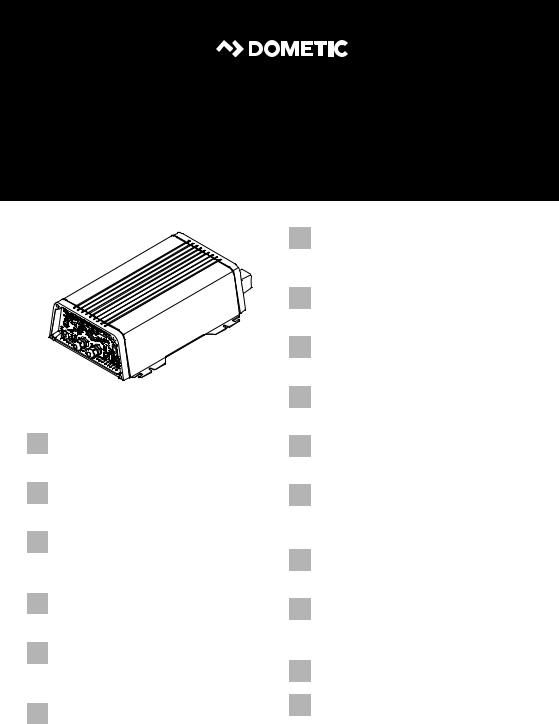
ENERGY & LIGHTING
SINEPOWER
BREAKER
OUTPUT





INPUT

DSP1212C, DSP1224C, DSP2012C, DSP2024C
EN |
Sine wave inverter with integrated |
|
|
battery charger |
|
|
Installation and Operating Manual . . . . . . . . 3 |
|
DE |
Sinus-Wechselrichter mit integiertem |
|
|
Batterielader |
|
|
Montageund Bedienungsanleitung . . . . .33 |
|
|
Onduleur sinusoïdal avec chargeur de |
|
FR |
|
|
|
batterie intégré |
|
|
Instructions de montage |
|
|
et de service . . . . . . . . . . . . . . . . . . . . . . . . .65 |
|
|
Inversor sinusoidal con cargador de |
|
ES |
|
|
|
batería integrado |
|
|
Instrucciones de montaje y de uso . . . . . . . 97 |
|
|
Conversor sinusoidal com carregador |
|
PT |
|
|
|
da bateria integrado |
|
|
Instruções de montagem e manual de |
|
|
instruções . . . . . . . . . . . . . . . . . . . . . . . . . . |
128 |
|
Inverter a onda sinusoidale pura con |
|
IT |
|
|
|
caricabatterie integrato |
|
|
Istruzioni di montaggio e d’uso . . . . . . . . 159 |
|
NL
DA
SV
NO
FI
RU
PL
SK
CS
HU
Sinusomvormer met geïntegreerde acculader
Montagehandleiding en gebruiksaanwijzing. . . . . . . . . . . . . . . . . . 190
Sinus inverter med integreret batterilader
Monteringsog betjeningsvejledning. . . 221
Sinusväxelriktare med inbyggd batteriladdare
Monteringsoch bruksanvisning . . . . . . . 252
Sinus vekselretter med integrert batterilader
Monteringsog bruksanvisning . . . . . . . . 282
Siniaaltoinvertteri, jossa integroitu akkulaturi
Asennusja käyttöohje . . . . . . . . . . . . . . . 312
Синусоидальный инвертор со встроенным зарядным устройством для аккумуляторов
Инструкция по монтажу и эксплуатации 342
Przetwornica sinusoidalna z wbudowaną ładowarką akumulatora
Instrukcja montażu i obsługi. . . . . . . . . . . 375
Sínusový menič s integrovanou nabíjačkou batérií
Návod na montáž a uvedenie
do prevádzky. . . . . . . . . . . . . . . . . . . . . . . 406
Sinusový měnič s nabíječkou baterií
Návod k montáži a obsluze . . . . . . . . . . . 437
Szinuszos inverter integrált akkumulátortöltővel
Szerelési és használati útmutató . . . . . . . 468

SinePower
Please read this instruction manual carefully before installation and first use, and store it in a safe place. If you pass on the product to another person, hand over this instruction manual along with it.
Table of contents
1 Explanation of symbols . . . . . . . . . . . . . . . . . . . . . . . . . . . . . . . . . . . . . . . . . . .4 2 General safety instructions . . . . . . . . . . . . . . . . . . . . . . . . . . . . . . . . . . . . . . . .4 3 Scope of delivery . . . . . . . . . . . . . . . . . . . . . . . . . . . . . . . . . . . . . . . . . . . . . . .8 4 Accessories . . . . . . . . . . . . . . . . . . . . . . . . . . . . . . . . . . . . . . . . . . . . . . . . . . . .8 5 Target group for this manual. . . . . . . . . . . . . . . . . . . . . . . . . . . . . . . . . . . . . . .8 6 Intended use . . . . . . . . . . . . . . . . . . . . . . . . . . . . . . . . . . . . . . . . . . . . . . . . . . .9 7 Technical description . . . . . . . . . . . . . . . . . . . . . . . . . . . . . . . . . . . . . . . . . . . .9 8 Fitting the device. . . . . . . . . . . . . . . . . . . . . . . . . . . . . . . . . . . . . . . . . . . . . . .15 9 Connecting the device . . . . . . . . . . . . . . . . . . . . . . . . . . . . . . . . . . . . . . . . . .16 10 Before initial use . . . . . . . . . . . . . . . . . . . . . . . . . . . . . . . . . . . . . . . . . . . . . . .19 11 Using the device . . . . . . . . . . . . . . . . . . . . . . . . . . . . . . . . . . . . . . . . . . . . . . .21 12 Cleaning and caring for the device . . . . . . . . . . . . . . . . . . . . . . . . . . . . . . . 25 13 Troubleshooting . . . . . . . . . . . . . . . . . . . . . . . . . . . . . . . . . . . . . . . . . . . . . . 26 14 Warranty . . . . . . . . . . . . . . . . . . . . . . . . . . . . . . . . . . . . . . . . . . . . . . . . . . . . 28 15 Disposal . . . . . . . . . . . . . . . . . . . . . . . . . . . . . . . . . . . . . . . . . . . . . . . . . . . . . 28 16 Technical data . . . . . . . . . . . . . . . . . . . . . . . . . . . . . . . . . . . . . . . . . . . . . . . . 29
|
3 |
|
EN |
||
|
||
|
|
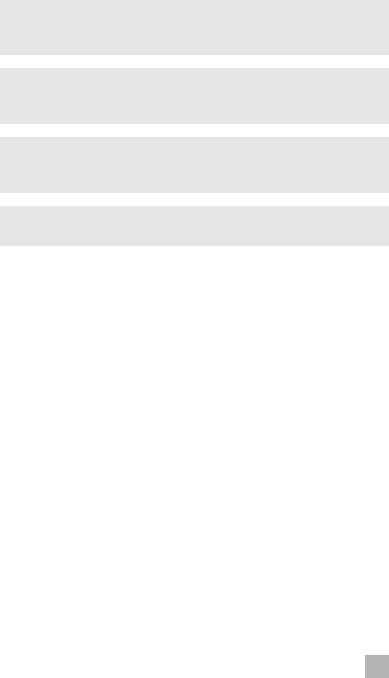
Explanation of symbols |
SinePower |
1Explanation of symbols
DDANGER!
Safety instruction: Failure to observe this instruction will cause death or serious injury.
!WARNING!
Safety instruction: Failure to observe this instruction can cause death or serious injury.
ANOTICE!
Failure to observe this instruction can cause material damage and impair the function of the product.
INOTE
Supplementary information for operating the product.
2General safety instructions
2.1General safety
The manufacturer accepts no liability for damage in the following cases:
•Faulty assembly or connection
•Damage to the product resulting from mechanical influences and incorrect connection voltage
•Alterations to the product without express permission from the manufacturer
•Use for purposes other than those described in the operating manual
Note the following basic safety information when using electrical devices to protect against:
•Electric shock
•Fire hazards
•Injury
4 |
EN |
|
SinePower |
General safety instructions |
2.2General safety
DDANGER!
•In the event of fire, use a fire extinguisher which is suitable for electrical devices.
!WARNING!
•Only use the device as intended.
•Ensure that the red and black terminals never come into contact.
•Disconnect the device from the mains:
–Before cleaning and maintenance
–After use
–Before changing a fuse
•If you disassemble the device:
–Detach all connections
–Make sure that no voltage is present at any of the inputs and outputs
•The device may not be used if the device itself or the connection cable are visibly damaged.
•If this power cable for this device is damaged, it must be replaced by the manufacturer, customer service or a similarly qualified person in order to prevent safety hazards.
•This device may only be repaired by qualified personnel. Inadequate repairs may cause serious hazards.
•This device can be used by children aged 8 years or over, as well as by persons with diminished physical, sensory or mental capacities or a lack of experience and/or knowledge, providing they are supervised or have been taught how to use the device safely and are aware of the resulting risks.
•Electrical devices are not toys.
Always keep and use the appliance out of the reach of children.
•Children must be supervised to ensure that they do not play with the device.
ANOTICE!
•Before start-up, check that the voltage specification on the type plate is the same as that of the power supply.
•Ensure that other objects cannot cause a short circuit at the contacts of the device.
•Never pull the plug out of the socket by the connection cable.
|
5 |
|
EN |
||
|
||
|
|

General safety instructions |
SinePower |
• Store the device in a dry and cool place.
2.3Safety when installing the device
DDANGER!
•Never mount the device anywhere where there is a risk of gas or dust explosion.
!CAUTION!
•Ensure that the device is standing firmly.
The device must be set up and fastened in such a way that it cannot tip over or fall down.
ANOTICE!
•Do not expose the device to a heat source (such as direct sunlight or heating). Avoid additional heating of the device in this way.
•Set up the device in a dry location where it is protected against splashing water.
2.4Safety when connecting the device electronically
DDANGER! Danger of electrocution
•For installation on boats:
If electrical devices are incorrectly installed on boats, corrosion damage might occur. Have the device installed by a specialist (marine) electrician.
•If you are working on electrical systems, ensure that there is somebody close at hand who can help you in emergencies.
!WARNING!
•Always use sockets which are grounded and secured by residual current circuit breakers.
•Make sure that the lead has a sufficient cross-section.
•Lay the cables so that they cannot be damaged by the doors or the bonnet.
Crushed cables can lead to serious injury.
!CAUTION!
•Lay the cables so that they cannot be tripped over or damaged.
6 |
EN |
|
SinePower |
General safety instructions |
ANOTICE!
•Use ductwork or cable ducts if it is necessary to lay cables through metal panels or other panels with sharp edges.
•Do not lay the 230 V mains cable and the 12 V DC cable in the same duct.
•Do not lay the cable so that it is loose or heavily kinked.
•Fasten the cables securely.
•Do not pull on the cables.
2.5Operating the device safely
DDANGER! Danger of electrocution
•Do not touch exposed cables with your bare hands. This applies especially when operating the device from the AC mains.
!WARNING!
•Only use the device in closed, well-ventilated rooms.
!CAUTION!
•Do not operate the device
–In salty, wet or damp environments
–In the vicinity of corrosive fumes
–In the vicinity of combustible materials
–In areas where there is a danger of explosions.
•Before starting the device, ensure that the power supply line and the plug are dry.
•Always disconnect the power supply when working on the device.
•Please observe that parts of the device may still conduct voltage even if the fuse has blown.
•Do not disconnect any cables when the device is still in use.
ANOTICE!
•Make sure the air inlets and outlets of the device are not covered.
•Ensure good ventilation.
|
7 |
|
EN |
||
|
||
|
|

Scope of delivery |
SinePower |
3Scope of delivery
No. in
Designation
fig. 1
1Sine wave inverter with integrated battery charger
2DSP-EM
3 Connection cable DSP-EM
–Operating manual
4Accessories
Designation |
Ref. no. |
|
|
Battery sensor MCA-HS1 |
9600000101 |
|
|
5Target group for this manual
The electrical installation (chapter “Connecting the device” on page 16) is intended for professionals who are familiar with the applicable regulations of the country in which the equipment is to be installed and/or used.
All other chapters are intended for the users.
8 |
EN |
|

SinePower |
Intended use |
6Intended use
!WARNING!
Never use the device on vehicles where the positive terminal of the battery is connected to the chassis.
The devices with integrated battery charger convert direct current into a 230 – 240 V AC supply of 50 Hz or 60 Hz:
•12 Vg: DSP1212C, DSP2012C
•24 Vg: DSP1224C, DSP2024C
Additionally the devices can charge the following batteries:
•Lead automotive batteries
•Lead gel batteries
•Maintenance-free batteries
•Absorbed glass mat (AGM) batteries
•Lithium ion batteries
Never use the devices to charge other battery types (such as NiCd or NiMH).
!WARNING! Danger of explosions
Do not charge batteries with a cell short circuit. The oxyhydrogen they produce can cause explosions.
Do not charge nickel cadmium and non-rechargeable batteries with the charger. The cases of these batteries can burst explosively.
7Technical description
The devices can be operated wherever a DC connection is available:
•12 Vg: DSP1212C, DSP2012C
•24 Vg: DSP1224C, DSP2024C
The device can be used as follows:
•As a sine wave inverter: the device produces a pure 230 V output voltage
•As a battery charger (4-stage charging characteristic)
•Power sharing: the device powers a connected load with 230 V and simultaneously charges a battery
•Generator function (mains voltage function): the device supports a 230 V mains voltage by supplementing it with energy from a battery (common power source)
|
9 |
|
EN |
||
|
||
|
|

Technical description |
SinePower |
The light-weight and compact construction of this device allows for easy installation in mobile homes, commercial vehicles or motor and sailing yachts.
The output voltage corresponds to the household voltage from the socket (pure sine wave, THD <3 %).
Please observe the values for constant output power and peak output power as indicated in chapter “Technical data” on page 29. Never connect devices that have a higher power requirement.
INOTE
Note when connecting devices with an electrical drive (such as power drills and refrigerators), that they often require more power than is indicated on the type plate.
The priority circuit reduces the load on a connected battery by switching the device always to mains operation if AC power grid is connected. The device ensures that a connected load is supplied with voltage:
•In case the AC grid power breaks down or is unstable
•In case the AC grid power does not suffice to supply the connected consumers
The device has various protective mechanisms.
•Overvoltage shutdown: The device shuts itself off when the voltage of the connected DC source exceeds the cut-off value. It restarts when the voltage returns to the restart value.
•Undervoltage shutdown: The device shuts itself off when the voltage of the connected DC source sinks below the cut-off value. It restarts when the voltage rises to the restart value.
•Excess temperature shutdown: The device switches off when the temperature inside the device or the temperature on the cooling element exceeds a cutoff value. It restarts when the temperature falls to the restart value.
•Overloading and short circuit shutdown: The LED on the device indicates an operating fault when an excess load is connected or a short circuit has occurred.
INOTE
The individual values are found in the chapter “Technical data” on page 29.
10 |
EN |
|
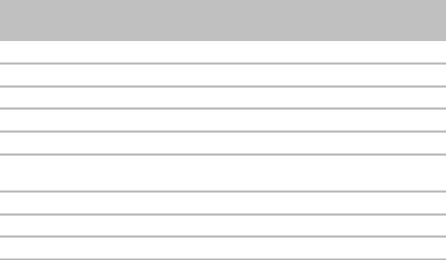
SinePower |
Technical description |
The device is operated in the following network configuration:
•TN network (fig. i):
The neutral conductor of the AC output is grounded. A safety switch (RCD) must be installed at the device‘s AC output.
The softstart function allows the connection of loads with high starting current.
The device can be easily controlled using the DSP-EM.
7.1Control elements device
Item in |
Description |
Explanation |
|
fig. 2 |
|||
|
|
||
|
|
|
|
1 |
Main switch |
Switches the device on, off or to operation via |
|
|
“ON/OFF/REMO.” |
a remote control(accessory) |
|
|
|
|
|
2 |
Status LED |
See chapter “Status indications” on page 21 |
|
|
|
|
|
3 |
Breaker |
Protects the device from overload. |
|
|
|
The fuse can be pressed in again once it has |
|
|
|
triggered. |
|
|
|
|
7.2Connections
Item in
Description
fig. 2
4AC PG fitting
5AC PG fitting
6Ground terminal (Earthing on the vehicle bodywork)
7Positive terminal
8Negative terminal
9CI/LIN BUS connections (LNA)
Battery sensor or temperature sensor connection
10 DSP-EM connection (LNB)
11 Connection of remote switch
12 Fan
|
11 |
|
EN |
||
|
||
|
|

Technical description |
SinePower |
7.3Control elements DSP-EM
Item in |
Description |
Explanation |
|||
fig. 3 |
|||||
|
|
|
|
||
|
|
|
|
|
|
1 |
Selector button |
Turn: Navigate through menus or change |
|||
|
|
|
|
values |
|
|
|
|
|
Press: Select menu items or values |
|
|
|
|
|
|
|
2 |
|
|
|
Deactivates the inverter function and thus the |
|
|
|
|
|
power supply of the battery to the 230 V |
|
|
|
|
|
consumers. The consumers are supplied |
|
|
|
|
|
exclusively by an external AC power grid, the |
|
|
|
|
|
battery is not discharged via the inverter. |
|
|
|
|
|
|
|
3 |
|
|
|
Switches the device‘s night mode on or off. |
|
|
|
|
|
The device‘s charging current is limited and |
|
|
|
|
|
the fan operates at low speed. |
|
|
|
|
|
|
|
4 |
Display |
Displays values and current statuses of the |
|||
|
|
|
|
connected devices. |
|
|
|
|
|
|
|
7.4Description of functions
The device supports the functions described below.
Power sharing function
If the load from the connected consumer devices and the battery charging current is higher than the connected 230 V power source, the fuse of the power source would normally blow. In power sharing mode, the device reduces the battery charging current and thus increases the power available for connected consumers.
The power sharing level (current at the 230 V input) can be configured using the DSP-EM. If must be adapted to the fuse of the power source. For example, if it has a 10 A fuse, the power sharing level must also be 10 A.
12 |
EN |
|

SinePower |
Technical description |
Example (values for illustration purpose only):
|
|
12/24 V |
|
2 A |
- |
|
|
+ |
|
8 A |
|
|
10 A |
|
AC OUTPUT |
AC INPUT |
|
230 V |
|
|
|
|
INOTE
Keep in mind that the device only measures the current which flows through the device. If you connect more consumers in parallel, e. g.a refridgerator or an separate charger, this additional load may trip the fuse. In this case, set the power sharing level value below the fuse‘s value accordingly.
Generator function (external mains power supply)
ANOTICE!
Observe the standards that apply in your country to the generator function.
If the load current is greater than the fuse of the connected 230 V power source, the fuse would normally blow. The generator function enables the device to provide additional power, which it takes from the battery.
If the required power falls below the power sharing level, the device recharges the battery.
In generator mode, the 230 V power source and the battery act as a common power source. While doing so, the battery is discharged.
The generator mode can manually be shut off via DSP-EM to ensure that the battery will not be discharged.
If the battery‘s voltage or capacity does not suffice to support the grid the device is disconnected from the grid and the inverter tries to work in isolated operation.
|
13 |
|
EN |
||
|
||
|
|

Technical description |
SinePower |
Example (values for illustration purpose only):
|
|
12/24 V |
|
3 A |
- |
|
|
+ |
|
7 A |
|
AC OUTPUT |
4 A |
|
|
AC INPUT |
|
|
230 V |
|
Battery charging function
INOTE
If a battery sensor (accessory) is connected, the device adjusts the voltage according to the measured values.
For this purpose the battery sensor has to be configured with DSP-EM.
The battery is charging with IU0U characteristics (fig. g).
1: I phase (bulk)
At the beginning of the charging process, the flat battery is charged with a constant current (100 % charge current) until the battery voltage reaches the charging end voltage. The charging current decreases when the battery has reached this charging level.
2: U0 phase (absorption)
Now the two-stage absorption charging process (U0-Phase) begins, where the charge voltage and duration depend on the size and type of the battery. The voltage remains constant until the minimum charging current (6 % of the set current) or the maximum charging time (10 hours) is reached.
3: U Phase (floating)
The U phase serves to maintain the battery capacity (100 %).
If DC loads are connected, they are powered by the device. Only if the power required exceeds the capacity of the device is this surplus power provided by the battery. The battery is then discharged until the device re-enters the I phase and charges the battery.
14 |
EN |
|
SinePower |
Fitting the device |
4: 12-day conditioning
Every 12 days, the battery charger switches back to phase 3 for 85 min in order to revive the battery. This prevents any fatigue symptoms such as sulphation.
8Fitting the device
8.1Tools required
For the electrical connection you will need the following tools:
•DC connection: two flexible connection cables
Determine the necessary thickness from the table in chapter “Fitting the device” on page 15.
•AC connection: two 3-phase cables (input and output)
•Housing ground: one cable
•Crimping tool
•Cable lugs and conductor sleeves
For fastening you will require the following tools:
•Machine bolts (M4) with washers and self-locking nuts or
•self-tapping screws or wood screws.
8.2Mounting instructions
When selecting the installation location, observe the following instructions:
•The device can be mounted horizontally or vertically.
•The device must be installed in a place that is protected from moisture.
•The device may not be installed in the presence of flammable materials.
•The device may not be installed in a dusty environment.
•The place of installation must be well ventilated. A ventilation system must be
available for installations in small, enclosed spaces. The minimum clearance around the device must be at least 5 cm (fig. 4).
•The air intake on the underside or the air outlet on the back of the device must remain clear.
|
15 |
|
EN |
||
|
||
|
|

Connecting the device |
SinePower |
•For ambient temperatures higher than 40 °C (such as in engine or heating compartments, or direct sunlight), the device may shut down although the connected load is below the rated load (derating).
•The device must be installed on a level and sufficiently sturdy surface.
ANOTICE!
Before drilling any holes, make sure that no electrical cables or other parts of the vehicle can be damaged by drilling, sawing and filing.
8.3Mounting the device
Mount the device as shown (fig. 5).
8.4Mounting the DSP-EM
Mount the DSP-EM as shown (fig. 6).
9Connecting the device
9.1General instructions
!WARNING!
•The device may only be connected by a qualified workshop. The following information is intended for technicians who are familiar with the guidelines and safety precautions to be applied.
•Never use the device on vehicles where the positive terminal of the battery is connected to the chassis.
•If you do not fit a fuse to the positive cable, the cables can overload, which might result in a fire.
•When installed in vehicles or boats, the device must be connected to the chassis or earth.
•When setting up a socket distribution circuit (mains setup), comply with the applicable regulations.
•Only use copper cables.
•Keep the cables for the DC connection as short as possible (<1 m).
16 |
EN |
|
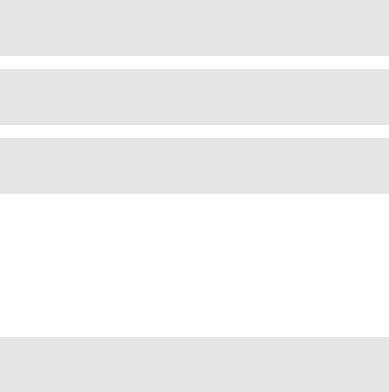
SinePower |
Connecting the device |
•Keep to the specified cable cross section and fit a cable fuse (fig. 8 1, page 1) as close to the battery as possible on the positive cable (see the table).
Device |
Required cable |
Cable fuse |
|
cross section |
|||
|
|
||
|
|
|
|
DSP1212C |
25 mm² |
>200 A |
|
|
|
|
|
DSP1224C |
16 mm² |
>100 A |
|
|
|
|
|
DSP2012C |
50 mm² |
>400 A |
|
|
|
|
|
DSP2024C |
25 mm² |
>200 A |
|
|
|
|
9.2Connecting the device
!WARNING!
Before connecting the AC output cable, make sure the device is switched off at the main switch.
ANOTICE!
Make sure that you do not reverse the polarity. Incorrect polarity can damage the device.
INOTE
Tighten the nuts and bolts to a maximum torque of 15 Nm. Loose connections may cause overheating.
Connect the device as shown:
–Connecting the battery: fig. 7 and fig. 8
–Connecting the ground terminal fig. 9
–Connecting the 230 V power cable: fig. 0
–Connecting the 230 V output cable: fig. 0
9.3Connecting the DSP-EM
ANOTICE!
Only plug in the connection to the DSP-EM in the remote port. The device can be damaged by connecting it incorrectly.
Connect the DSP-EM as shown (fig. a).
|
17 |
|
EN |
||
|
||
|
|

Connecting the device |
SinePower |
9.4Connecting external switch to turn device on and off
INOTE
Use cables with a cable cross section of 0.25 – 0.75 mm².
You can use the following as an external switch:
•external switch, voltage supply from the device: fig. b A
•Control unit with relay or transistor circuit (TR): fig. b B
•external switch with voltage supply from the battery (BAT) of the vehicle: fig. b C
•external switch with its own voltage supply (DC POWER) e.g. from the ignition: fig. b D
Set the main switch (fig. 2 1, page 1) to “OFF”.
Make sure that the connection for the DSP-EM (fig. 2 10, page 1) is not assigned.
Set the main switch (fig. 2 1, page 1) to “REMO.”.
Connect the external on/off switch with the connection cable to the terminal (fig. 2 11, page 1).
9.5Connecting a relay
You can install a relay which monitors whether the 230 V input is connected. Thereby you can, for example, implement an immobiliser so that the vehicle cannot be started when the 230 V input is connected.
Connect the relay as shown (fig. c):
–NO: normally open contact
–COM: common contact
–NC: normally closed contact
Relay specification:
Maximum voltage |
Load |
Current consumption |
||
NO |
NC |
|||
|
|
|||
|
|
|
|
|
250 Vw |
Ohmic |
0.5 A |
0.5 A |
|
|
|
|
|
|
12 V/24 Vg |
Ohmic |
1 A |
1 A |
|
|
|
|
|
|
18 |
EN |
|
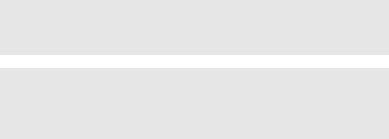
SinePower |
Before initial use |
10 Before initial use
ANOTICE!
The setting of incorrect values may result in malfunctions and damage. Note the Technical Data of the connected devices.
INOTE
If the power source is lost during the initialisation, you have to reset the device to its factory settings (chapter “Reset the device to factory settings” on page 20) and then restart the initialisation.
Before you can use the device, you have to initialise it in the DSP-EM.
Switch on the system.
The number “1” appears on the DSP-EM’s display.
Without connected battery sensor
Turn the selector button until the number 8 is displayed.
Press the selector button to save the value.
The display shows the service code “S-12”.
Turn the selector button to set the battery type:
–0: Lead acid
–1: Gel
–2: AGM
–3: eStore
–4: Customer
Press the selector button to save the selected value.
The display shows the service code “S-14”.
Turn the selector button to set the maximum charging current in percent (25 %, 50 %, 75 % or 100 % of the rated charging current).
Press the selector button to save the selected value.
The display shows the service code “S-15”.
Turn the selector button to set the bulk/absorption voltage (13.5 V to 15.0 V in 0,1 V steps).
Press the selector button to save the selected value.
The display shows the service code “S-16”.
|
19 |
|
EN |
||
|
||
|
|

Before initial use |
SinePower |
Turn the selector button to set the floating voltage (12.8 V to 14.3 V in 0,1 V steps).
Press the selector button to save the selected value.
The DSP-EM shuts off.
With connected battery sensor
Turn the selector button until the number 9 is displayed.
Press the selector button to save the value.
The display shows the service code “S-12”.
Turn the selector button to set the battery type:
–0: Lead acid
–1: Gel
–2: AGM
–3: eStore
–4: Customer
Press the selector button to save the selected value.
The display shows the service code “S-13”.
Turn the selector button to set the battery capacity (10 Ah to 249 Ah in 10 Ah steps).
Press the selector button to save the selected value.
The display shows the service code “S-14”.
Turn the selector button to set the maximum charging current in percent (25 %, 50 %, 75 % or 100 % of the rated charging current).
Press the selector button to save the selected value.
The DSP-EM shuts off.
Reset the device to factory settings
Switch on the system.
The number “1” appears on the DSP-EM’s display.
Turn the selector button until the number 35 is displayed.
The display shows the service code “S-35”.
Press the selector button to reset the device.
20 |
EN |
|
SinePower |
Using the device |
11 Using the device
11.1Switching on the device
Set the main switch (fig. 1 3, page 1) of the device to the “ON” position. Set the On/Off switch to “OFF” to switch off.
The device performs a self-test.
After the self-test is completed successfully, the LED lights up blue (fig. 1 2, page 1).
11.2Status indications
The blue LED (fig. 1 2, page 1) shows the operating condition of the device.
Display |
Input voltage |
|
|
Constantly lit |
Normal mode |
|
|
Long flash, short interruption |
Device overheated/Overload |
|
|
Quick flash |
Overvoltage/Undervoltage |
|
|
Off |
Other fault |
|
|
The device switches off if:
•The battery voltage drops below 10.5 V (12 Vg connection) or 21 V (24 Vg connection).
•The battery voltage exceeds 16.5 V (12 Vg connection) or 33 V (24 Vg connection).
•The device is overloaded.
•The device overheats.
•An overcurrent ocurs at the grid input.
If this happens, shut down the device with the main switch (fig. 1 3, page 1).
Check that the device is sufficiently ventilated and that the ventilation grilles are unimpeded.
Wait 5 – 10 minutes and switch the device on again without any electric consumers.
|
21 |
|
EN |
||
|
||
|
|

Using the device |
SinePower |
11.3Using DSP-EM
Display
Item in
Explanation
fig. d
1Menus
2Status displays
3Display of values
4Display of values as a bar chart
Menus
Symbol Menu
Battery menu
Displayed values
With battery sensor
•Duration until the battery is fully loaded
•Current flow at the battery (measured at the battery)
•Voltage at the battery terminals
Bar chart: State of charge of battery
Without battery sensor
Battery charging:
•Current flow to the inverter
•Voltage at the battery terminals
Battery discharging:
•Display shows value “0”
•Voltage at the battery terminals
Bar chart: No indication
AC load menu |
• Output power |
|
• Output current of inverter |
|
• Output voltage of inverter |
|
Bar chart: Percentage output power related |
|
to the rated power |
|
|
AC power supply menu |
• Current of AC power supply |
|
• Voltage of AC power supply |
|
Bar chart: Output power of AC power supply |
|
|
22 |
EN |
|
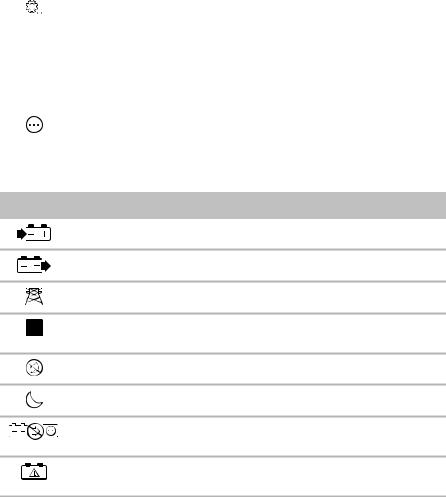
SinePower |
Using the device |
|
|
Symbol Menu |
Displayed values |
|
|
Fuse menu |
Inverter/charger operation only |
|
• Maximum allowed current of AC power |
|
supply |
|
Bar chart: No indication |
|
Note: This value can be adjusted (chapter |
|
“Changing maximum allowed current of AC |
|
power supply” on page 25). |
|
|
Service menu |
Skilled personal only |
|
Service guide: dometic.com/manuals |
|
|
Status displays
Symbol Menu
Battery is charging
Battery is discharging
AC mains power is connected
Inverter is operating
Consumers can be connected
Energy saving mode is switched off
The charger is operating in night mode
Inverter is switched off
The consumers are supplied via the AC power supply.
With battery sensor
Low battery charge
|
23 |
|
EN |
||
|
||
|
|
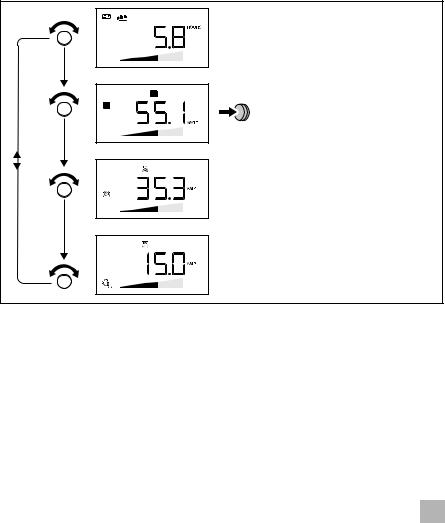
Using the device |
SinePower |
Navigating within the menu
Navigate through the menus as follows:
Turn the selector button (fig. 3 1, page 1) to scroll through the menu pages.
The selector button can be turned in both directions. When the last menu item has been reached, the display goes back to the first menu item.
The symbol of the selected menu(fig. d 1, page 2) is displayed.
The first value is displayed.
Press the selector button to show the next value.
The following figure shows how you can navigate in the menu:
 Battery menu
Battery menu
Load menu
Alternating voltage
 AC power supply menu
AC power supply menu
 Fuse menu
Fuse menu
Press the selector button to show the next value in the current menu (chapter “Menus” on page 22).
24 |
EN |
|

SinePower |
Cleaning and caring for the device |
Switching the inverter function on/off
If an external AC power grid is connected, you can protect the battery by switching off the device‘s inverter function. Thereby the consumers are supplied exclusively by the external grid.
Press 
 to switch off the inverter function.
to switch off the inverter function.
Press 
 again to switch on the inverter function.
again to switch on the inverter function.
Switching on the display
The display switches off after a defined time.
Press the selector button or 
 or
or  , to illuminate the display.
, to illuminate the display.
Changing maximum allowed current of AC power supply
When the device works in inverter/charger operation the maximum allowed power supply current can be set.
When the device is connected to the AC power supply, the previous power sharing level value is flashing in the DSP-EM’s display.
Turn the selector button to scroll to the Fuse menu.
The current value for the maximum power supply current is displayed.
Press the selector button.
The current value flashes.
Turn the selector button to change the value.
Press the selector button to save the value.
If no input is made for 2 min the previous value is used.
The display shows the new value.
12 Cleaning and caring for the device
ANOTICE!
Do not use sharp or hard objects or cleaning agents for cleaning as these may damage the product.
Occasionally clean the product with a damp cloth.
|
25 |
|
EN |
||
|
||
|
|

Troubleshooting |
SinePower |
13 Troubleshooting
13.1Inverter
!WARNING!
Do not open the device. You risk sustaining an electric shock by doing this.
INOTE
If you have detailed questions on the specifications of the device please contact the manufacturer (addresses on the back of the instruction manual).
The LED (fig. 2 2, page 1) indicates the fault:
LED display |
Cause |
Remedy |
|
|
|
Quick flash |
Input voltage is too high |
Check the input voltage and reduce it. |
|
|
|
|
Input voltage too low |
The battery needs recharging. |
|
|
Check the cables and connections. |
|
|
|
2 s lit, short |
Overheating |
Switch off the device and the consumer. |
interruption |
|
Wait 5 to 10 minutes and switch the device on |
|
|
again without any electric consumers. |
|
|
Reduce the load and make sure the device |
|
|
has better ventilation. Then switch the |
|
|
consumer back on. |
|
|
|
|
Excessive load |
Switch off the device and remove the |
|
|
consumer. |
|
|
Then switch the device back on without the |
|
|
consumer. If no excessive load is now shown, |
|
|
then there is a short circuit in the consumer or |
|
|
the total load was higher than the power |
|
|
specified on the data sheet. |
|
|
Check the cables and connections. |
|
|
Press in the AC breaker in the device by hand. |
|
|
|
Off |
Other fault |
Contact the service. |
|
|
|
26 |
EN |
|
SinePower |
Troubleshooting |
13.2DSP-EM
If the system detects an error, it switches off independently. The toolbar and the display bar are hidden.
Source |
Error |
Possible cause |
Possible Solution |
|
code |
||||
|
|
|
||
|
|
|
|
|
DSP |
E-01 |
Battery undervoltage |
Charge the battery. |
|
|
|
|
|
|
|
E-02 |
Battery overload |
Reduce the input voltage. |
|
|
|
|
|
|
|
E-03 |
Inverter overload |
Reduce the connected load. |
|
|
|
|
|
|
|
E-04 |
Overheating of device |
Ensure sufficient air supply at the |
|
|
–E-05 |
|
device. |
|
|
|
|
|
|
|
E-06 |
Initialisation error |
Contact customer service. |
|
|
|
|
|
|
|
E-07 |
Uninterrupted power |
Activate the inverter function (chapter |
|
|
|
supply is not present |
“Switching the inverter function on/ |
|
|
|
|
off” on page 25). |
|
|
|
|
Check the connection to the mains |
|
|
|
|
power supply. |
|
|
|
|
|
|
|
E-09 |
Under-temperature |
Contact customer service. |
|
|
|
|
|
|
|
E-10 |
Overheating of battery |
Ensure sufficient air supply at the |
|
|
|
|
battery. |
|
|
|
|
|
|
|
E-11 |
Grid input overcurrent |
Contact customer service. |
|
|
|
|
|
|
|
E-12 |
Overvoltage battery |
Contact customer service. |
|
|
|
|
|
|
Display |
E-16 |
CI bus does not respond |
Check the BUS cabling of the battery |
|
|
|
|
sensor. |
|
|
|
|
|
|
|
E-18 |
DSP-C does not respond |
Set the main switch to REMO. |
|
|
|
|
Check the BUS cabling of the DSP-C |
|
|
|
|
device. |
|
|
|
|
|
|
|
E-20 |
Battery charging status |
Charge the battery. |
|
|
|
too low |
|
|
|
|
|
|
|
27 |
|
EN |
||
|
||
|
|

Warranty |
SinePower |
14 Warranty
The statutory warranty period applies. If the product is defective, please contact the manufacturer's branch in your country (see the back of the instruction manual for the addresses) or your retailer.
For repair and warranty processing, please include the following documents when you send in the device:
•A copy of the receipt with purchasing date
•A reason for the claim or description of the fault
15 Disposal
Place the packaging material in the appropriate recycling waste bins wherever possible.
MIf you wish to finally dispose of the product, ask your local recycling centre or specialist dealer for details about how to do this in accordance with the applicable disposal regulations.
28 |
EN |
|
